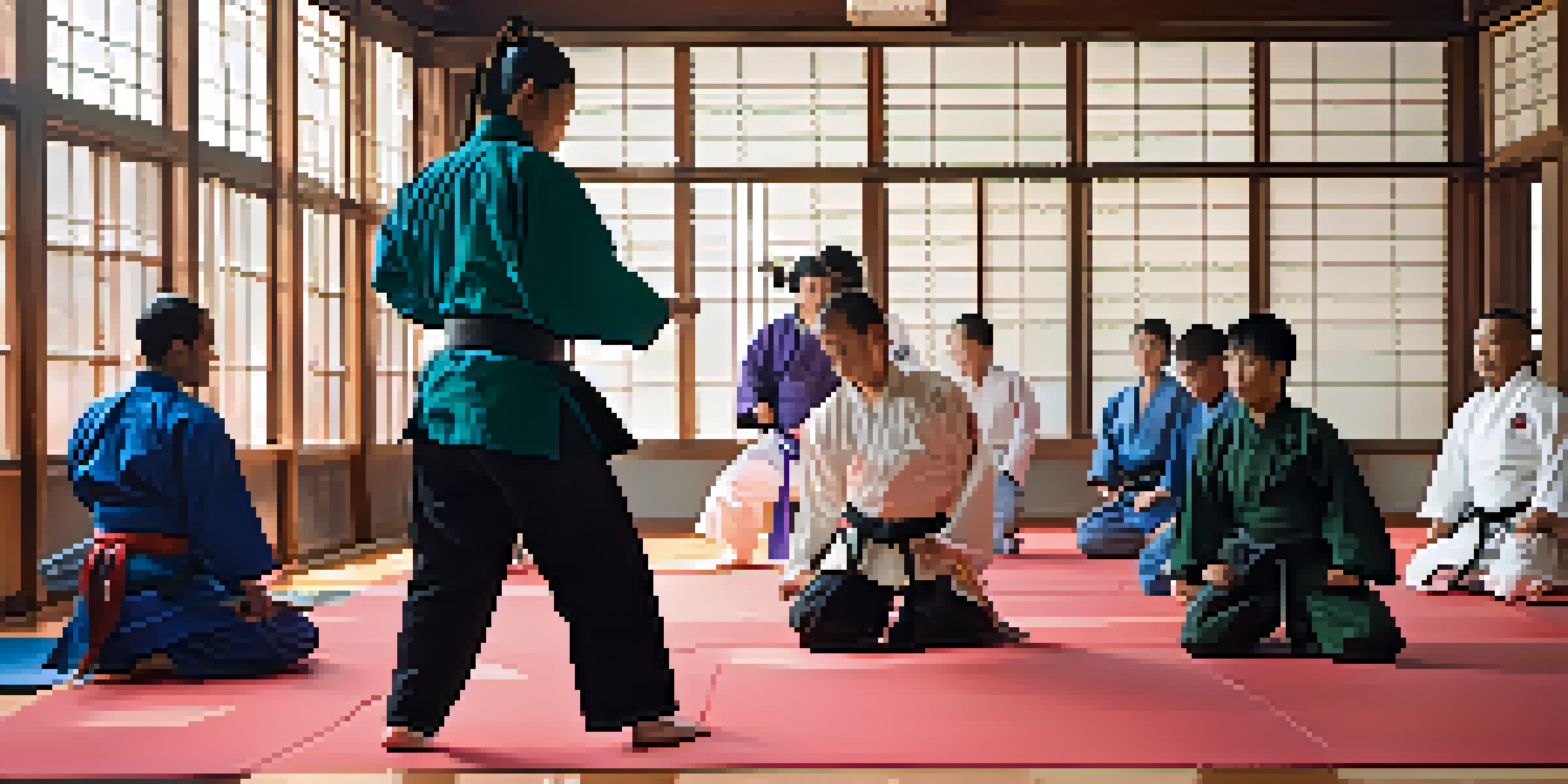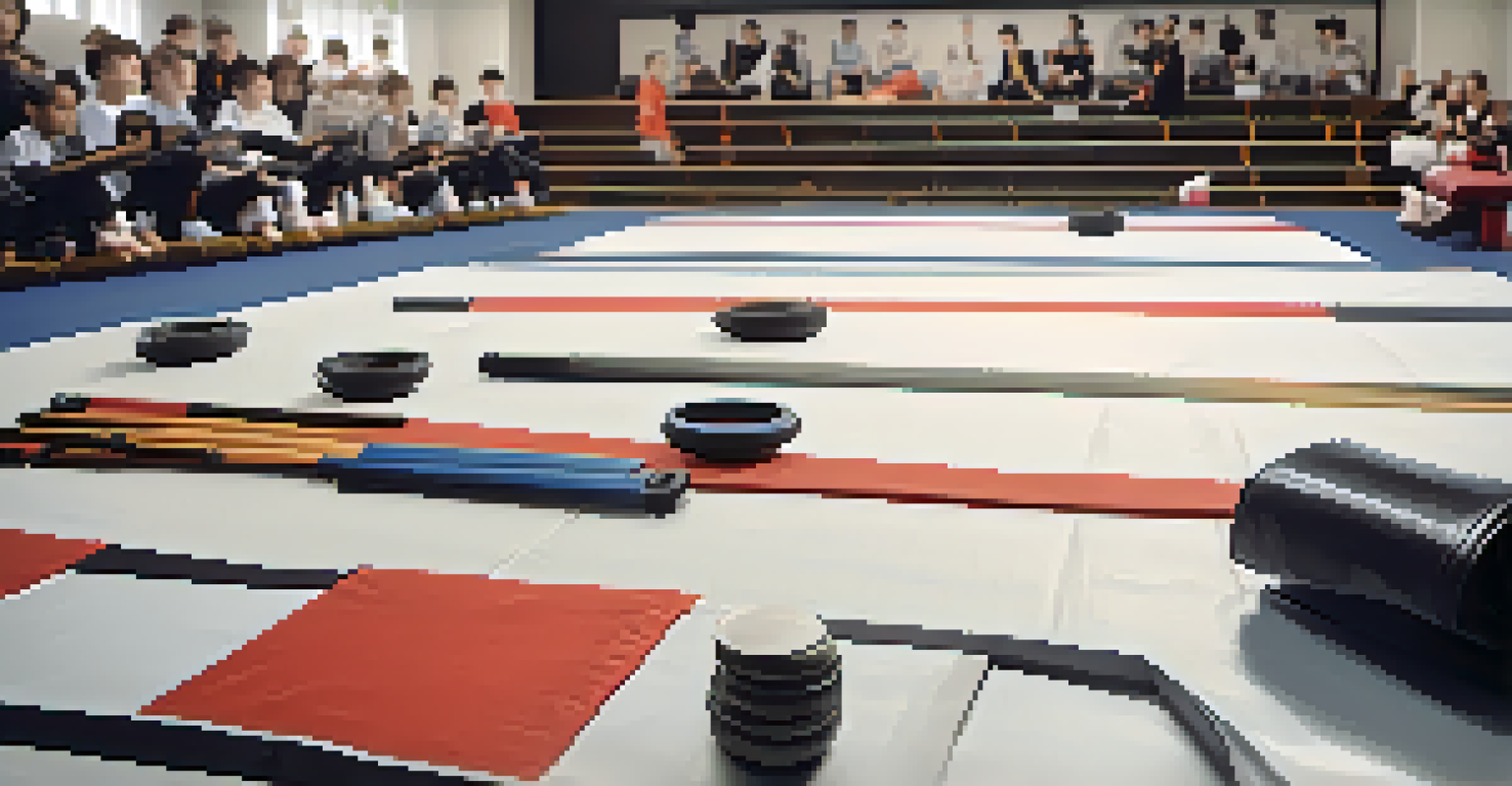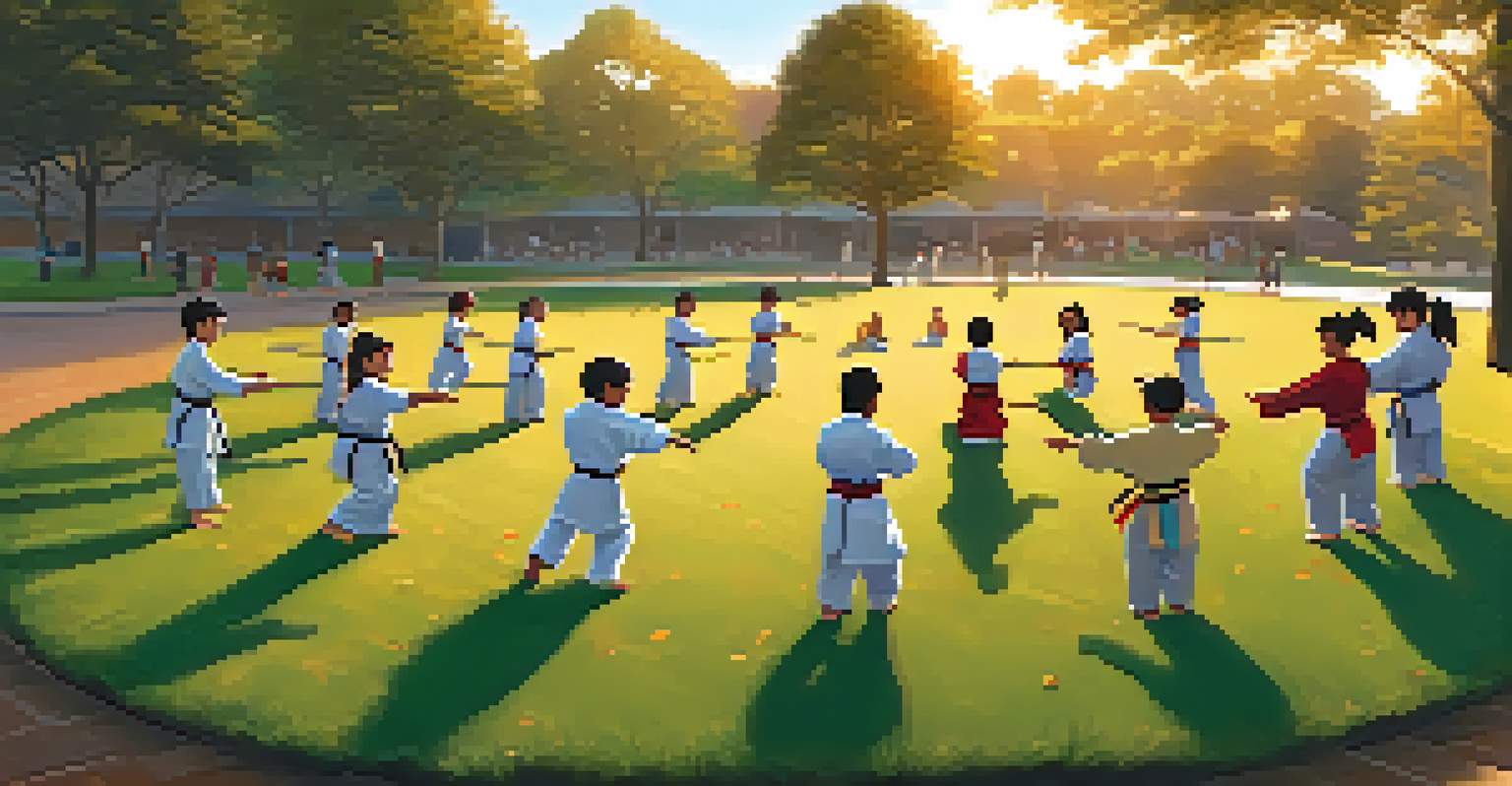Creating Adaptive Martial Arts Programs for Everyone

Understanding the Need for Adaptive Martial Arts Programs
Adaptive martial arts programs are designed to be inclusive, catering to individuals of all abilities. This approach recognizes that martial arts can benefit everyone, from children to adults, regardless of physical or cognitive challenges. By creating these programs, we not only promote physical fitness but also boost confidence and social skills.
Martial arts is not about the strongest or fastest; it’s about the heart and determination to learn and grow.
Imagine a martial arts class where everyone feels empowered to participate, from the seasoned athlete to someone with a disability. This inclusivity breaks down barriers and fosters a sense of community. Whether it’s through modified techniques or tailored instruction, adaptive programs ensure that all participants feel valued and capable.
The growing awareness of diverse abilities in sports has led to a demand for adaptive programs. As more schools and studios recognize this need, they can help cultivate an environment where martial arts are truly for everyone. This evolution not only enriches the lives of participants but also enhances the martial arts community as a whole.
Key Principles of Adaptive Martial Arts Instruction
When developing adaptive martial arts programs, several key principles should guide the instruction. First, flexibility in teaching methods is crucial. Instructors must be prepared to modify techniques and approaches to suit each participant's unique needs and capabilities.

Another important principle is communication. Clear and open dialogue between instructors and students can help identify what works best for each individual. This ensures that everyone feels understood and supported, paving the way for a more effective learning experience.
Inclusivity in Martial Arts Programs
Adaptive martial arts programs empower individuals of all abilities, fostering confidence and community.
Lastly, fostering a positive environment is essential. Encouragement and constructive feedback can go a long way in helping students build their skills and confidence. By creating a space where mistakes are viewed as learning opportunities, instructors can help students thrive in their martial arts journey.
Designing Classes for Varying Ability Levels
A successful adaptive martial arts class should accommodate varying ability levels, from beginners to advanced practitioners. One effective method is to use tiered instruction, where students can choose from different levels of difficulty based on their comfort and skill levels. This allows for personalized growth within the same class setting.
Inclusivity is not a matter of political correctness; it is a matter of social justice. Everyone deserves the opportunity to thrive, regardless of their abilities.
Incorporating partner work can also enhance learning. Pairing students strategically enables them to support and challenge one another, fostering camaraderie and teamwork. This not only strengthens skills but also builds friendships that can last beyond the dojo.
Finally, consider the physical space where classes are held. A well-designed environment that is accessible, safe, and comfortable for all participants can make a significant difference. By removing physical barriers, you open up avenues for everyone to engage fully in the martial arts experience.
Incorporating Modified Techniques and Equipment
One of the most effective ways to ensure inclusivity in martial arts is through the use of modified techniques and equipment. For instance, adapting stances or movements can help individuals with mobility challenges participate more fully. This could involve simplifying techniques or using supportive equipment such as balance aids.
Additionally, using specialized gear can enhance safety and accessibility. For example, lightweight protective gear can make it easier for those with limited strength to practice without fear of injury. These modifications not only increase participation but also ensure that students can practice safely and confidently.
Key Principles for Effective Instruction
Flexibility, communication, and a positive environment are essential for successfully teaching adaptive martial arts.
Regularly reassessing the techniques and equipment used in classes is essential. Gathering feedback from students can lead to further adaptations that make classes more inclusive. This continuous evolution is what keeps adaptive martial arts programs relevant and effective for all participants.
Training Instructors for Adaptive Approaches
Instructors play a vital role in the success of adaptive martial arts programs, which is why training them in adaptive approaches is so important. Providing workshops and resources focused on inclusivity can equip instructors with the tools they need to support diverse learners. This ongoing education not only enhances their teaching skills but also enriches their understanding of different abilities.
Encouraging instructors to share their experiences and insights can foster a collaborative learning environment. By exchanging ideas and strategies, instructors can develop a more comprehensive approach to teaching adaptive martial arts. This collective wisdom can lead to innovative practices that benefit all students.
Moreover, instilling a mindset of adaptability in instructors is crucial. They must be prepared to think on their feet and modify their teaching styles as needed. The ability to adjust their approach based on student feedback can make all the difference in creating a supportive and effective learning atmosphere.
Promoting a Sense of Community in Martial Arts
Creating a sense of community is essential in any martial arts program, especially in adaptive classes. By fostering connections among students, you encourage collaboration and support that enhance the learning experience. Group activities, team-building exercises, and social events can all contribute to building this community spirit.
Encouraging peer mentorship can be another effective strategy. Pairing students of different abilities allows for knowledge sharing and mutual support. This not only helps build confidence for both the mentor and mentee but also reinforces the idea that everyone has something valuable to contribute.
Continuous Improvement is Essential
Regular feedback and observation help evolve adaptive programs, ensuring they meet the diverse needs of all participants.
Finally, celebrating achievements—big and small—can strengthen community bonds. Recognizing progress, whether through belt promotions or personal milestones, creates an environment where everyone feels valued and motivated. This sense of belonging is what keeps students engaged and committed to their martial arts journey.
Evaluating and Improving Adaptive Programs
Continuous evaluation is key to maintaining effective adaptive martial arts programs. Gathering feedback from students and instructors can provide valuable insights into what is working well and what may need improvement. Surveys, discussions, and informal check-ins can all be effective tools for this process.
In addition to collecting feedback, observing classes can help identify areas for enhancement. Watching how students interact and engage can reveal opportunities for further adaptation in teaching methods or class structure. This hands-on approach helps ensure that programs remain responsive to the needs of all participants.

Finally, staying informed about best practices in adaptive sports is essential. Following trends and advancements in inclusive programming can inspire new ideas and improvements. By embracing change and innovation, adaptive martial arts programs can continue to evolve and thrive, benefiting everyone involved.